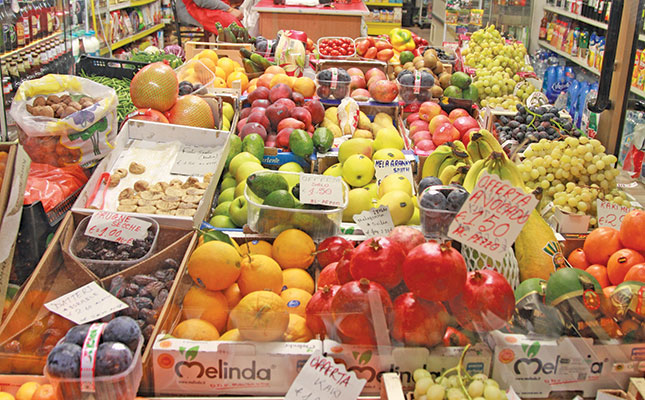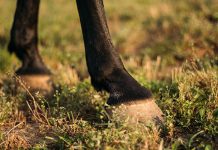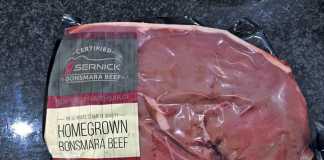
Photo: Glenneis Kriel
Packaging has always been used to protect, carry and identify products. Today, it is also being used to extend the shelf life of fresh produce and protect it from pathogens.
Initial solutions in the fruit industry focused primarily on packaging design, looking at the size, number and positioning of ventilation holes to facilitate good air movement and the quick cooling of produce, without compromising packaging strength and integrity. These holes, for example, need to align when packages are stacked on top of one another.
Alwyn van Jaarsveld, head of sales at Tessara, a manufacturer of packaging solutions for the fresh produce industry, says that research has resulted in packages that can shorten the time taken to cool fruit from more than 24 hours to less than 18 hours. This represents major energy savings and improvements in fruit-quality maintenance.
“With Eskom being unable to meet South Africa’s existing energy demands, farmers will struggle to further expand cold storage capacity in line with production expansions. Packaging will become increasingly important as a means of lengthening shelf life and maintaining the cold chain, by enabling farmers to pack directly from the land or accelerate the cooling of fruit to desired temperatures,” says Van Jaarsveld.
Smart solutions
Along with packaging design, research has focused on ways to put the ripening process on hold by either modifying the atmosphere to reduce respiration, or using ethylene scavengers to inhibit or reduce sensitivity to the growth hormone ethylene.
The solutions, amongst others, allow farmers to store apples year round, while the use of the growth inhibitor 1-methylcyclopropene, commercially known as SmartFresh, has revolutionised pear production in South Africa by enabling farmers to pick their Forelle pears two to three weeks later. Further ripening is then inhibited with SmartFresh.
The correct use of modified-atmosphere packaging can help to maintain the colour
of red meat, while prolonging its shelf life from two to four days under refrigeration to between five and eight days, while that of poultry can be increased from four to seven days to between 16 and 21 days.
Modified atmosphere can also be combined with other solutions to further enhance results. Tessara, for instance, has designed sulphur dioxide sheets that help to protect grapes, blueberries, roses, litchis and tomatoes against post-harvest decay through surface sterilisation.
“One of our blueberry client’s containers got stuck at ports for three or four weeks longer than anticipated last year, but his fruit was still marketable when it reached its destination, thanks to the controlled release of sulphur dioxide,” says Van Jaarsveld.
Another solution is silver technology, which is increasingly being used in packaging as an antimicrobial, helping to reduce foodborne disease risks such as listeria and E. coli in freshly cut fruit, vegetables and salads.
Branding
Branding has become more important than ever in the marketplace to help producers develop a competitive edge.
“South Africa is generally associated with exceptional quality, and therefore our produce is in high demand on most overseas markets. However, we need to move beyond branding just South Africa, as our biggest competitors aren’t other countries any longer, but neighbouring farmers who are exporting to the same countries at the same time as we do,” says Van Jaarsveld.
Branding is obviously of less importance when a farmer supplies major retailers.
“Supermarkets provide limited scope for personal branding, but farmers can still try to maintain the identity of their fruit through the use of stickers. On the other hand, supermarkets are like huge machines with intake programmes spanning months into the future. The sheer size of their operations makes it virtually impossible for single farmers to offer sufficient volumes throughout the year and to build a strong brand.”
While providing a good source of income, supermarkets do not reward farmers for quality, says Van Jaarsveld. “With tight market competition, it makes sense for farmers to target greengrocers, fresh markets and food delis with individually wrapped and branded premium products, almost as the wine industry is doing with boutique wines versus bulk wines.”
To be successful on this market, farmers should firstly ensure that they have a premium-quality product and make maximum use of technology to maintain and guarantee product quality.
“You can’t enhance the quality of a product once it’s harvested; you can only maintain it. So, start with a good-quality product,” says Van Jaarsveld.
Secondly, the packaging of the product should make it stand out from other products to attract consumers.
“People usually make a first purchase based on what they see, and the second purchase based on their experience of the first product. It can take months for a product to make its way back onto a shopping list if it fell off because of a negative experience,” he says.
The use of QR codes has the potential to significantly strengthen consumer relations and the sales experience by supplying a range of information, from nutrition to recipes and social-investment initiatives, which might not be displayed on the product.
For example, the QR code can be linked to a website, video, music or audio recording. Consumers can scan a code and trace the product back to its origin (for example, putting a ‘face’ to the product) in much the same way as when farmers sell their produce at farmers’ markets.
The QR code can also be used to bring full traceability and transparency to the supply chain. This can backfire, of course, if a producer has any skeletons in their cupboard, so appropriate care has to be taken care.
Geographic indicators, for example, are damaging Israeli wine exports, as many European consumers refuse to buy produce that originates in the West Bank, explains Van Jaarsveld.
Packaging material
The packaging material itself should suit the market. “If you’re targeting a vegan or vegetarian market, it might make sense to invest in green, compostable packaging. Green packaging, nevertheless, has its own negative spin-offs, such as deforestation, and in South Africa the high cost of these solutions drives products out of the reach of [many] South Africans,” says Van Jaarsveld.
Nevertheless, pressure for eco-friendly packaging material is mounting, with the EU and UK now imposing taxes on non-recyclable plastics. This, in turn, is fuelling the demand for recyclable packaging and for less packaging to be used on products.
Packaging strength is also becoming a non-negotiable, especially for countries with large informal markets such as those found in Africa and China. Van Jaarsveld explains that the packaging needs to be strong enough to enable vendors on scooters to collect single cartons from central distribution points and sell their fruit at the market.
“We’ve found that some producers are willing to invest up to 30% more in good packaging because they see it as a means of quality assurance,” he says.
Email Alwyn van Jaarsveld at [email protected].










